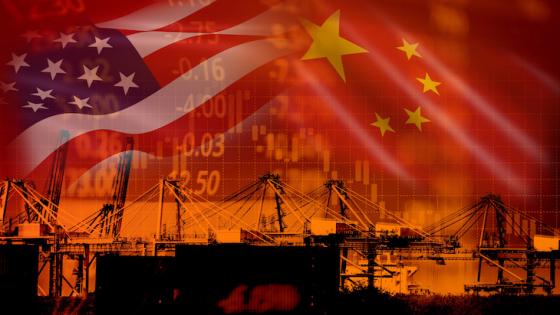The initial failure of the US Congress to grant President Obama Trade Promotion Authority (TPA) on 12 June 2015 – as a prelude to finishing the TransPacific Partnership (TPP) – was due in part to fears about how a new trade agreement would impact jobs in the US. For example, announcing her intention to vote against TPA, Democratic Leader Nancy Pelosi declared “we want a better deal for America's workers”.
As the US Congress finishes debate on TPA and prepares for submission of the TPP final text, understanding the likely impact of the TransPacific Partnership on the US domestic labour market is extremely important.
Not just a trade deal
To do so, it is useful to note that while TPP will provide great market access to trade, one of the most important contributions of the agreement will be to facilitate greater FDI in the US by partner country firms.1 So in addition to increasing employment opportunities in export-related sectors, TPP will encourage inward FDI which brings jobs, capital, R&D spending, technology, and productivity improvements to the US economy. At the same time, TPP will make it easier and more secure for US firms to expand their operations in partner countries, allowing them to capture more global market share, which benefits workers, strengthens R&D, and expands investment back home in the US.
TPP will impact FDI in two distinct ways.
- First, TPP will include provisions that directly reduce barriers to investment by improving intellectual property protection, removing barriers to investment in services, and increasing consistency and transparency of regulatory regimes across partner countries.
- Second, reducing barriers to trade increases FDI simply because trade and investment are complements.
Eighty percent of all trade in today’s world takes place among affiliates of multinational corporations or within supply chains organised by the MNCs. It is no surprise therefore that in AT Kearney's 2014 Foreign Direct Investment Confidence study, 53% of the business leaders surveyed said that TPP, if implemented, would impact their investment decisions. Another 22% said that the prospect of TPP has already influenced their investment decisions.
Peter A. Petri and Michael G. Plummer (PIIE 2012) estimate that one-third of US gains from TPP would be driven by the investment provisions of the agreement; outward FDI stocks would increase by $169 billion and inward FDI stocks would increase by $47 billion. At the time that report was published, only 9 countries were involved in TPP negotiations, so the Petri-Plummer estimates will now have to be revised upward. More than this, we have discovered that the movement of technology and management within MNC supply chains is faster and more intimate (with co-design of processes and back-and-forth of technical personnel) than can be captured by either general equilibrium or sophisticated microeconomic trade models at the present time, resulting in productivity effects and welfare gains from the spread of FDI are likely much greater than contemporary estimates suggest.
In short, a large component of the benefits from TPP to the US will accrue via FDI, both inward FDI into the US economy and outward FDI to access partner economies.
Inward FDI by TPP firms in the US
In 2012 (the most recent year for which data are available), firms headquartered in TPP countries employed more than 1.4 million workers in the US, which was 26% of all US workers employed by affiliates of foreign firms in that year. Figures 1a and 1b show that employment by TPP country firms in the US, both in absolute terms and relative to total employment by all foreign firms, peaked in the late 1990s, dipped slightly in the early 2000s, and has been increasing recently. This pattern suggest that there is potential for even greater growth in employment of US workers. These firms paid average wages and benefits of more than $74,000 per worker, which is well above the average for all US firms.

Source: US Bureau of Economic Analysis.
Besides creating jobs, TPP firms inject capital and create value-added within the US economy (Figures 2a and 2b). In 2012, affiliates of firms from TPP countries spent more than $70 billion on new capital expenditures in the US, which was 36% of total capital expenditures by affiliates of foreign firms in the US in that year. Value added by firms from TPP countries has been increasing, and in 2012 made up about 25% of total value added by foreign firms in the US.

Source: US Bureau of Economic Analysis.
FDI has economic implications even beyond job creation, investment, and R&D spending. The presence of foreign firms puts competitive pressure on domestic firms while at the same time bringing know-how that might be used improve domestic firm performance. When foreign firms enter a market, they deploy new production technologies, management practices, and quality-control procedures that can spill over to the local market. These FDI spillovers can take the form of horizontal technology transfers from foreign to domestic firms in the same industry. Workers may leave a foreign-owned firm and take the techniques they have learned with them to their next job in a domestic firm. Spillovers may also be vertical. If foreign-owned firms wish to source inputs locally, they may demand higher quality from, or even share production technology with their suppliers, resulting in greater productivity of local firms in upstream industries. Earlier work (Moran and Oldenski 2013) shows that roughly 12% of the total productivity growth in the US from 1987 to 2007 can be attributed to productivity spillovers from inward FDI!
FDI from Japan is especially important
Japan is the most important of the TPP countries for FDI in the US. In 2013 Japanese firms were the largest source of new inflows of FDI into the US for the first time since 1992, injecting almost $45 billion of fresh investment into the US economy in that year alone. The data show Japanese investors to be a particularly dynamic component of the US economy, with steadily increasing integration, both through networks of Japanese suppliers attracted to co-invest alongside Japanese primes and through backward linkages to indigenous US companies. The R&D intensity of Japanese firms also exceeds that of other foreign firms in the US. In 2012 the average US worker at a Japanese firm received almost $80,000 in wages and benefits, well above the US average (Moran and Oldenski 2015).
Multinational Corporations (MNCs) of all types pay higher wages than purely domestic firms do. However, the US-based employees of foreign-owned multinationals earn more than even US MNC employees do. Among foreign MNCs operating in the US, Japanese firms pay higher than average wages, making them exceptional contributors to creating highly paying jobs in the US economy. This is due in part to the high value activities, such as R&D that Japanese firms perform in the US. The R&D intensity of Japanese-owned firms in the US, as measured by annual R&D expenditure per employee, is much higher and has been growing much more rapidly than that of other foreign firms in the US. In 2011 Japanese firms had R&D spending of more than $10,260 per worker, compared with about $8,270 for the average foreign firm.
Investment by US firms in TPP countries
In addition to increasing investment in the US, TPP will also create greater opportunities for US firms to expand not just through exports, but also through FDI. As shown in figure 3b, in 2012, 31% of sales by foreign affiliates of US MNCs poured into TPP countries. Many of the provisions that will likely appear in a final agreement will improve the access of US firms in TPP countries by standardising investment rules, strengthening intellectual property protections, and removing barriers to entry.
Previous research by Hufbauer, Moran, and Oldenski (2013) has shown that expansion of US based firms strengthens these companies and increases their hiring and investment both at home and abroad. When a US firm increases employment at its foreign affiliates by 10%, employment by that same firm in the US goes up by an average of 4%. Capital expenditures and exports from the US by that firm also increase by about 4%. R&D spending, which is associated not just with overall US employment but with employment in highly skilled, highly paid jobs, increases by 5.4%.

Source: US Bureau of Economic Analysis.
Conclusion
Although TPP often referred to as a trade agreement, the TransPacific Partnership is about much more than just trade. A number of the provisions that would likely appear in a final agreement impact foreign direct investment both directly and indirectly. The resulting expansion of FDI will bring many important benefits for consumers, firms, and – yes! – workers in the US.
The globalisation of foreign direct investment – both inward and outward – strengthens and improves the job base in the US domestic economy. Certainly, some jobs will be lost and others will be created in the process of global expansion. But the net effect is clearly positive, with the largest growth in high value added R&D intensive sectors. If members of Congress care about the creation of good jobs in the US, then they should get behind TPA and TPP.
References
Kearney A T (2014), ‘The 2014 AT Kearney Foreign Direct Investment Confidence Index.’
Hufbauer G C, T H. Moran and L Oldenski (2013), "Outward Foreign Direct Investment and US Exports, Jobs, and R&D: Implications for US Policy", PIIE Policy Analyses in International Economics 101.
Moran, Theodore H and Lindsay Oldenski (2013), "Foreign Direct Investment in the US: Benefits, Suspicions, and Risks with Special Attention to FDI from China", PIIE Policy Analyses in International Economics 100.
Moran, T H and L Oldenski (2015), "Japanese Investment in the US: Superior Performance, Increasing Integration", PIIE Policy Brief number PB15-3.
Petri, P A and M G Plummer (2012), "The TransPacific Partnership and Asia-Pacific Integration: Policy Implications", PIIE Policy Brief number PB12-16.
Footnote
1 At the time of writing, countries involved in the TPP negotiations include Australia, Brunei, Canada, Chile, Japan, Malaysia, Mexico, New Zealand, Peru, Singapore, Vietnam, and the US.





